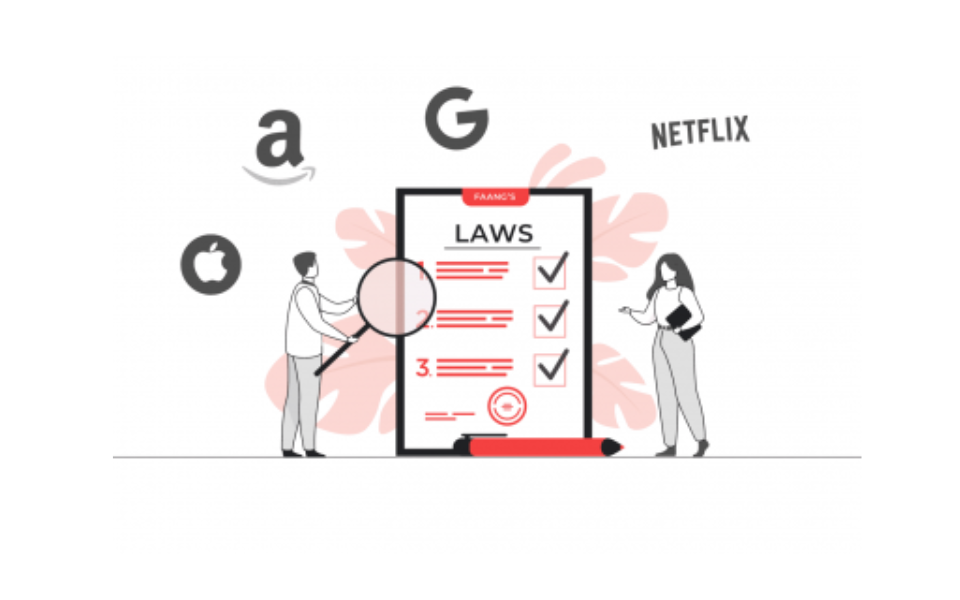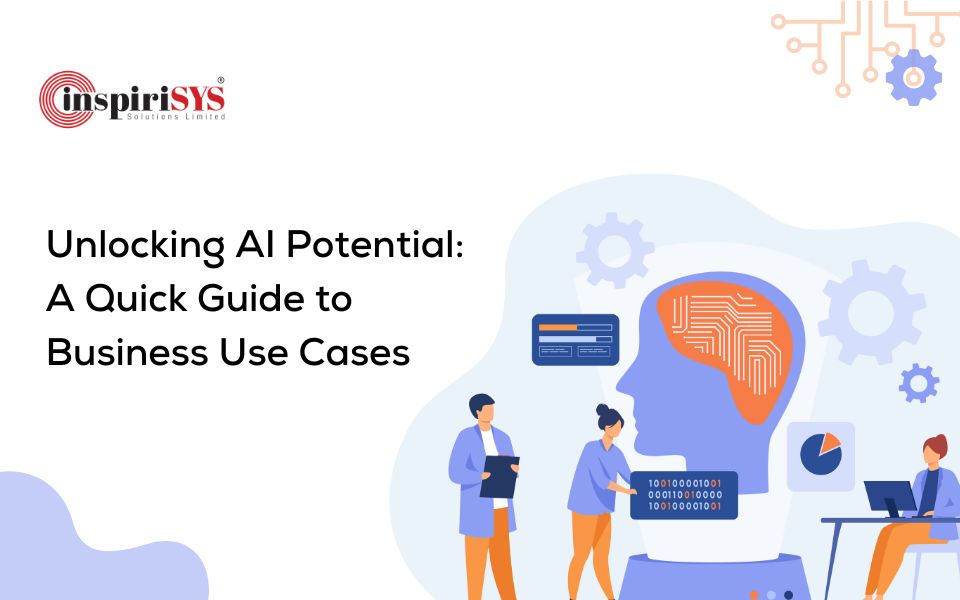The financial and tech marketplaces have a thing for acronyms. FAANG – the powerhouses comprising Facebook (now Meta), Amazon, Apple, Netflix, and Google – with their innovations, personalization, superior UI/UX, and disruptive approach, has shown just how to operate in a modern economy.
These businesses did not start with the deep pockets that they have today. So, every company – irrespective of size – looking to increase competitive advantages and further its growth can learn a lot from the FAANG group.
Insights on FAANG’s UX strategies offer companies a perspective of future trends – what economies value and what your customers expect.
We have curated some notable UI/UX laws leveraged to success by FAANGs. These laws contain general guidelines to help UX designers in the design process and can support you in creating winning experiences and an efficient product. But before that, a short detour!
Significance of UI/UX Laws
In UX, aesthetically appealing designs do not equate to a user-friendly interface. So, when considering the “design” element, you must extend the notion, taking it beyond the scope of creating something pretty.
Incorporating user research cohesively with essential laws is fundamental to being a good UX designer. UX designers often draw on famous psychology laws or standards to support their design strategies.
Having a thorough knowledge of the foundational rules of Human-Computer Interaction (HCI) will help you understand how your customers interact with your site. Identifying their thoughts, perceptions, expectations, and actions along the journey will help you build engaging digital interactions.
This article focuses on some critical laws that will help elevate your design skills and create meaningful experiences for your users.
Important Laws that FAANGs follow
1. Law of Similarity
As per this law, users observe similar elements in a design as a whole even if they are separated.
It implies that your users recognize visually similar design elements- i.e., elements sharing the same size, color, orientation, shape, and movement – as connected in functionalities or meaning.
For this purpose, links that you have clicked on a page bear a different color compared to links that are not clicked on.
A good example would be how Google’s links turn purple when you’ve clicked on them and visited the site.
2. Miller’s Law
This law provides an understanding of the attention span of the average person. According to Miller, our absolute judgment and short-term memory are limited – on average – to 7.
It means that 7 (plus or minus 2) is an ideal way to organize content, making it smoother for human comprehension. Thus, by decreasing the cognitive load or effort required to memorize information for decision-making, you can ease your user experience.
Some ways to implement Miller’s Law are :
– Reducing the number of choices can prevent your customers from getting overwhelmed. It can support them in making choices more quickly.
– Splitting chunks of information and grouping them into smaller units.
– Avoiding dependence on your customers’ short-term memory, leveraging recognition rather than recall.
– Implementing clutter-free designs so that there is less number of design elements competing for customers’ attention.
Take the example of Netflix’s entire design philosophy. The clutter-free design and minimal choices make it one of the most popular OTT platforms.
3. Occam’s Razor
Occam’s Razor is a problem-solving principle. It suggests that when one has to choose between competing hypothetical answers to a given problem, one should select the solution that makes the least assumptions.
Occam’s Razor becomes relevant when a designer has to choose between various design prototypes. Of course, it would help if the designer aimed to select the most simple design of all available options.
What happens when you do not have a simple option? First and foremost, the ideal way to minimize complexity is to avoid it.
However, if it still needs to be reduced, examine each element and eliminate as many as possible without affecting the overall functionality. You should consider it completed only if you are sure that all the other elements are necessary.
This reflects the philosophy of well-known German designer Dieter Rams. He stated that good design incorporates as little design as possible.
Apple’s simple, modern and straightforward website design facilitates smooth navigation and is a proven example of the successful incorporation of Occam’s Razor Law.
4. Postel’s Law
Postel’s Law, also called Robustness Principle, was conceptualized by one of the Internet’s early pioneers, Jon Postel.
The Law emphasizes the need to be liberal in what you accept and adopt a conservative approach in what you send out. Postel’s Law makes two critical points for UI/UX designers.
Firstly, it stresses being empathetic and flexible with your customers. It suggests adopting an open-minded approach to your user’s different actions or inputs. For example, if you ask users to mention their country, and they type ‘UK’ instead of ‘United Kingdom,’ accept it; and convert the data for consistency yourself.
Secondly, it advocates asking your users for limited information, i.e., only the essential variables you need to meet your requirements, and encourages customers to take action.
Netflix is an excellent example of Postel’s Law. Unlike many sites, Netflix does not make its customers fill in long forms to provide access to its services.
5. Hick’s Law
Most of us have been through at least one online experience where we gave up on making a choice simply because the list was exhaustive and overwhelming. That’s Hick’s Law for you!
This law postulates that when users have too many highly complex choices, it reduces the odds of the user making a choice.
When users have too many choices, it tends to result in a choice paralysis with the extra information inhibiting their capacity to take any action.
Limiting the available options is a crucial takeaway for designers from Hick’s Law. Netflix has successfully leveraged Hick’s Law to be at the top of its game. Rather than straightaway viewing the entire range of programmes, subscribers are presented with fewer choices on their home page.
This selection is further tweaked using algorithms that consider users’ past behavior and preferences to reduce stimuli to the bare minimum.
6. Jakob’s Law
This law is based on the rationale that as users spend most of their time on other sites too, they prefer your site to function similarly to the other sites they visit and are familiar with.
Jakob Nielsen (Director of the Nielsen Norman Group) outlined this law and hence, the name. He was a keen supporter of design for familiarity.
It’s a known fact that successful websites like Amazon standardize their design, trying to keep it very similar to the commonly used websites.
Amazon, Facebook, and Netflix have the company logo in the top left corner; and clicking on it takes you to the homepage. This is only one of the most common elements of a website. More importantly, customers desire it to be the same way on the top sites and yours!
Likewise, most effective designs are user-centric. Leveraging existing mental models for designs is a good idea. An example being placing your online store’s ‘shopping bag’ in the navigation bar. This practice is maintained by all major eCommerce platforms.
Suppose your online site is dramatically different from the regular sites. That could be one of the reasons you aren’t getting the desired volumes of customers to engage positively with your product.
Implementing Jakob’s Law, standardizing common traits throughout your website design can help you improve your user experience and drive sales.
7. Law of Proximity
According to this law, elements placed together in close proximity appear related or linked.
Similar to the Law of Common Region, this Proximity Law is a grouping principle that supports customer engagement through effective design.
In UI/UX, this implies that you will be able to create common region elements by incorporating strategic arrangements of your website elements. However, this requires tactical use of whitespace on your pages to showcase distinct group elements or meaningful categories.
Facebook is a prime example of the Law of Proximity. Users can react to comments, and the reactions are presented in direct proximity to the lead comment. This helps establish a reference to context, i.e., what was the response to.
The Law of Proximity thus helps designers to remove ambiguity and confusion.
8. Pareto Principle
Also known as the 80/20 Rule; the Pareto Principle states that 80% of the results is the outcome of 20% of efforts. You could describe it as an approach where a comparatively small number of elements have a rather significant bearing.
The Pareto Principle (like other guiding principles) is a rule of thumb rather than a rigid formula.
The Pareto Principle is a popular idea across several industries and is of immense significance in programs having limited resources or tight schedules.
In UX, leveraging the Pareto Principle implies focusing on areas that will provide the most benefits to your users.
UX designers could develop minimum viable products (MVPs), creating low-fidelity models that require lesser input but exhibit significant outcomes. This principle could also be adopted for enhancing select features that supply the best results.
Google Docs is an excellent example of how the Pareto Principle can attract more users to your product. It attracts users by enabling them to focus on productivity and creativity rather than on formatting, unlike traditional software.
By losing focus on the Pareto Principle, the word processor space provided players like Google Docs opportunities to bridge the gap.
9. Parkinson’s Law
As per this law, a task will expand to consume all the available time.
Parkinson’s Law is also a popular concept in other fields too. It strikes a chord with productivity enthusiasts.
This law is based on the idea that when people know that they have more time to complete a task, their brain relaxes. In contrast, when there is the pressure of a time limit, people tend to stay focused on finishing the job in time.
In UI/UX parlance, this law takes on the approach that one should limit the time allocated for completing a task to what users expect it to take.
After selecting the items, when users proceed to purchase on Amazon, they are bound by a time duration to complete the transaction. Anything that reduces this duration translates as a positive experience.
Conclusion
The FAANG companies have scaled unprecedented heights of success. This was because of their commitment to understanding their customers’ needs. Along with the need to incorporate strategic and knowledge-based approaches to create better user experiences.
You too can chart your growth by being sensitive to your users’ requirements, leveraging customer feedback and research right from the start, and using these UI/UX design laws to help you consistently improve and enhance your user-centric website.

































